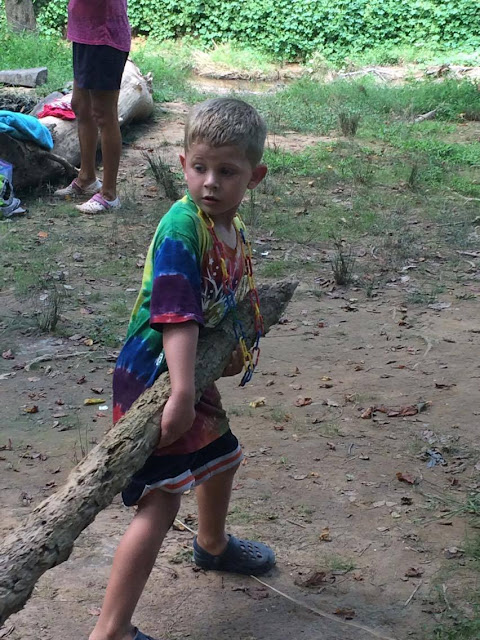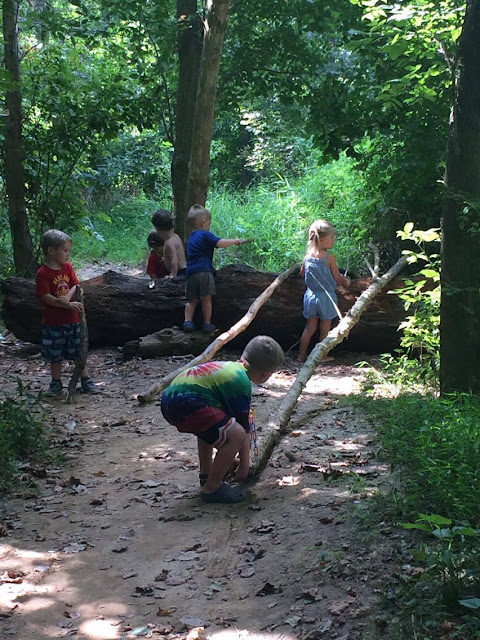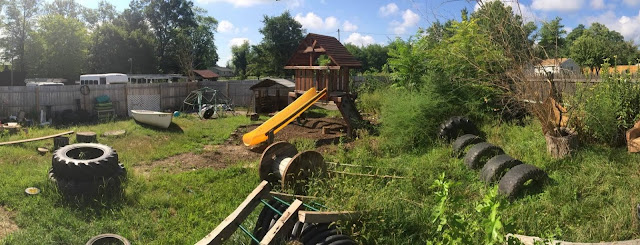The more I study play, the more of a purest I become.. It brings to light the thought that if we say that humans are designed to play and learn from life and through interactions with people and things.. then why do we try to alter or speed up that natural process ?.. I think the saying " You can't fix what ain't broken" comes to mind..
A play based program is one that does not come prescribed with pre-written daily lesson plans.. No calendars of pre-planned activities ripped from the pages of cookie cutter pre school workbooks. No worksheets, no flashcards, no teacher decided lesson plans and blanket lists of academic goals to reach.
A play-based preschool is rooted in the idea that through play, children will learn socially, cognitively, physically and the whole child will be developed and nurtured.
This IDEA.. is not just an IDEA it is well backed up by research and is proven in classrooms worldwide. Knowing what we know about children and what science has proven, has supported my passion to provide a play-based program for the children enrolled at my school.
***In this set of posts I will attempt to show a small glimpse into the learning of all kinds that happens naturally in my play based preschool. Play... It's Academic, Play... It's Emotional, Play... It's Work, Play... It's Person Building, Play.. It's the Foundation, and finally Play... It's Learning. This is Part One Play... It's Academic**
 |
| I found this sitting on top of the shelf in preschool. I was impressed by the child's attention to detail and the ability to repeat the pattern in such an intentional way. I even, for a second thought that maybe one of the teachers assembled these tiny pieces. After asking the children, one child pipped up saying " That's my whole family, the green one's my grandma." I went from impressed with mathematical accuracy, to being impressed with his symbolism, and his ability to clearly represent the members of his family. He started with an idea and carried it through with clear understanding. Experiences like this form that layer of knowledge and experience with ideas and materials that will support later lessons in both math and reading. |
Programs designed for young children should reflect the developmental needs of the children in the program not mimic that of children much older with a completely different set of developmental needs.
Preschools should not look like schools at all, they should look like living breathing places for play.. heck I think SCHOOLS can use a little re design to meet the needs of the children and support children of all ages in active, engaged learning.
Each day I witness children engaged in self guided learning. These experiences are meaningful because they are initiated by the children based on their interest in that moment. I find that the children are deeply engaged in tasks and challenges that they choose. They spend much more time and effort to solve their problem or complete their task because it's their task and the motivation is coming from within.
Animal Talk
These two friends pulled out a basket of small animals and set up shop at one of the tables in the classroom. they started by dumping the basket on the center of the table and then, as if they had a non verbal agreement, they began arranging the animals. As I observed further, I noticed that they began to group like animals together. They discussed the characteristics of the different animals and also, at times, referenced animal facts. This sharing of dialog and of prior knowledge gave each child the chance to be the expert and to share and gain additional knowledge. This ping pong style dialog continued throughout the entire play session.

As the animal groupings began to take shape their conversation turned toward the value of each grouping. Counting and comparing the groups educed vocabulary such as more, less, and same. By simply observing, I was able to clearly asses what these two children understand about classification, sorting, graphing, as well as their knowledge base and interest in animals. This "lesson" was totally child initiate, lead and completed. No adult was needed to plan this.. It was not extended on because what the children needed to learn and practice was done through play, they had constructed new knowledge and will, I'm sure, return to these animals our countless other loose parts in the classroom and practice this same skill over and over each time constructing a deeper and deeper understanding of what it means to count, sort, classify, and compare.
Why not set up "work stations" to learn through play like the play that naturally took place in the example above?
Because, natural and authentic learning like what was observed happens when the idea is owned by the children. When it is THEIR inner voice that leads them to fill their time with that task. It's like a lit fire that they control the flame of, if we keep trying to fan and blow on it to make it grow we may risk accidentally putting out that fire.. Instead we tend to the fire giving it what it needs to continue to glow and flicker. If we trust that play is enough we can allow experiences like this to take place, we can trust that children will re play these same schemas time and time again until the layer of learning is set and they are ready to construct additional layers.
Uninterrupted play with open ended loose parts is vital to the development of the whole child. Play supports the development of social/emotional, physical, cognitive, and creative skills in children. How do you make time and space in your program for play?






































